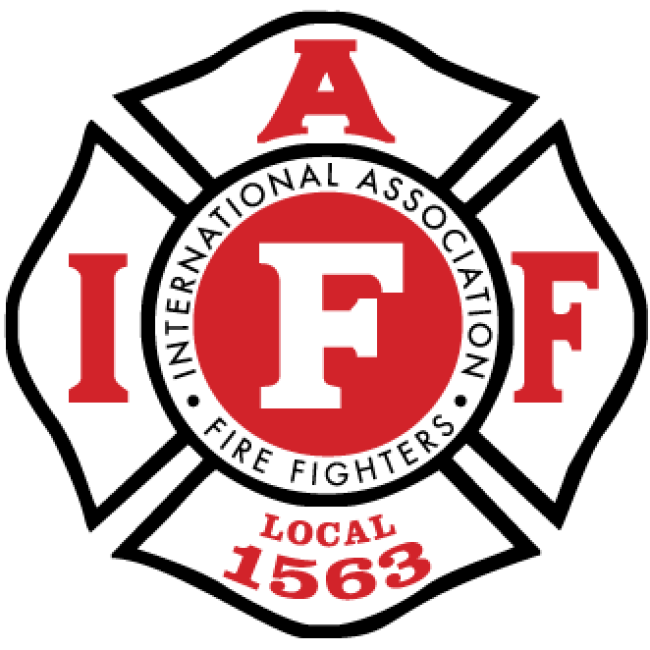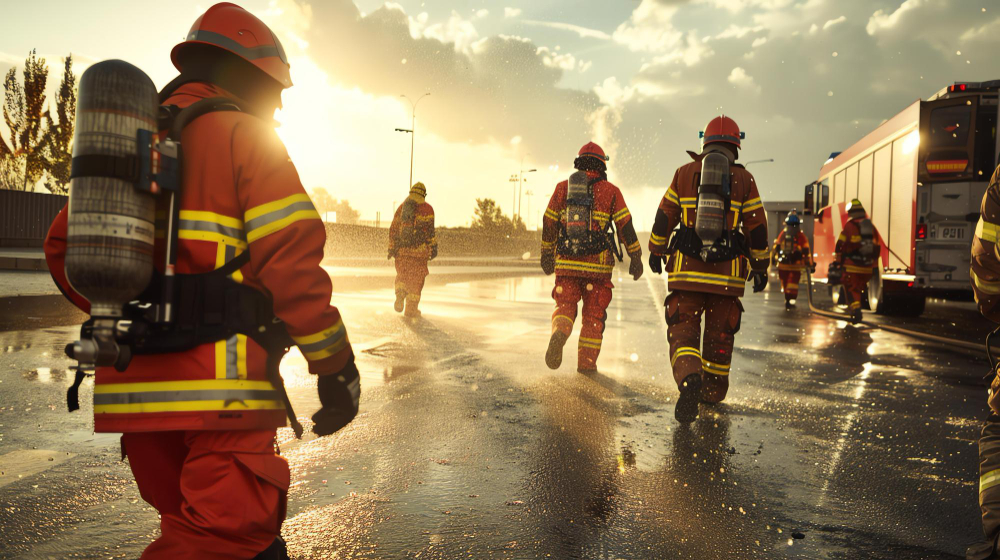Fire Response Training is a critical component of workplace safety that every organization should prioritize. Understanding and implementing effective fire response protocols can significantly reduce the risk of injury and damage in the event of a fire. This specialized training ensures that employees are well-prepared to act swiftly and efficiently, helping to mitigate the potential consequences of a fire emergency.
Fire Response Training covers essential skills such as identifying fire hazards, executing evacuation plans, and operating fire extinguishers, all of which are crucial for safeguarding both personnel and property. Investing in comprehensive fire response training complies with regulatory standards and fosters a safer working environment. By integrating fire response training into regular safety programs, businesses demonstrate their commitment to protecting their workforce and ensuring operational continuity.
Understanding Fire Safety Protocols
Understanding fire safety protocols is fundamental to ensuring a safe workplace environment. These protocols encompass a range of preventive measures and reactive strategies designed to minimize the risk and impact of fire emergencies. Employees must be familiar with the layout of fire exits, alarm systems, and fire suppression systems specific to their workplace.
Regular training sessions should cover the proper procedures for responding to fire alarms, including evacuation routes and assembly points. Additionally, protocols should include guidance on maintaining clear access to fire exits and ensuring that all safety equipment is operational and easily accessible.
By comprehending these protocols, employees become proactive participants in fire safety, contributing to a collective effort to safeguard lives and property. Effective implementation of fire safety protocols helps quick evacuation during emergencies and enhances overall preparedness and response.
Roles and Responsibilities in Fire Emergencies
Understanding the roles and responsibilities in fire emergencies is vital for ensuring a swift and effective response.
- Alarm Activation: Designated individuals should be responsible for activating the fire alarm system to alert everyone in the building.
- Evacuation Coordination: Fire wardens or safety officers lead the evacuation, ensuring all personnel follow the designated routes and reach assembly points.
- Assisting Vulnerable Individuals: Staff members are assigned to assist those with disabilities or other needs to ensure they can evacuate safely.
- Equipment Checks: Assigned personnel regularly inspect fire safety equipment and systems to ensure functionality during an emergency.
- Emergency Services Liaison: A point of contact should be designated to provide emergency services with critical information about the situation and building layout.
Clearly defining and communicating these roles enhances your organization’s readiness and improves safety outcomes during a fire emergency.
Identifying and Assessing Fire Hazards
Identifying and assessing fire hazards is a proactive step in preventing fire emergencies and ensuring workplace safety. This process involves thoroughly examining the work environment to identify potential ignition sources, flammable materials, and conditions that could contribute to a fire.
Regular inspections should evaluate hazards such as exposed wiring, improperly stored chemicals, and blocked fire exits. Risk assessments should consider internal and external factors, including the condition of fire safety equipment and the effectiveness of existing fire prevention measures.
Employees should be trained to recognize and report potential hazards to management. By addressing these risks promptly, organizations can implement corrective actions, such as improving storage practices or enhancing fire detection systems. This proactive approach significantly reduces the likelihood of fire incidents and ensures a safer working environment for everyone.
Fire Drills and Evacuation Procedures
Fire drills and evacuation procedures are essential for effectively preparing employees to handle fire emergencies.
- Schedule Regular Drills: Conduct fire drills at least twice yearly to familiarize employees with evacuation procedures.
- Mark Exits: Ensure all fire exits are marked and accessible, and regularly check for obstructions.
- Document Procedures: Maintain up-to-date documentation of evacuation routes and procedures and make it accessible to all employees.
- Designate Roles: Assign specific roles to staff members, such as fire wardens, to help manage the evacuation process and assist others.
- Review and Update: Regularly review and update your evacuation plan based on feedback from drills and changes in the workplace layout.
Incorporating these practices into your fire safety plan will help ensure a smooth and orderly evacuation in an emergency, ultimately safeguarding your employees and property.
Using Fire Extinguishers Properly
Proper use of fire extinguishers is critical to managing small fires before they escalate into major emergencies. Employees should be trained to select the correct type of extinguisher for different kinds of fires, such as water, foam, CO2, or dry powder extinguishers.
The training should include the PASS technique: Pull the pin, Aim at the base of the fire, Squeeze the handle, and Sweep from side to side. Proper use involves understanding when attempting to extinguish a fire is safe and when to evacuate and call emergency services.
Employees should also be familiar with the location of fire extinguishers throughout the workplace and ensure they are regularly inspected and maintained. Properly using fire extinguishers can prevent small fires from spreading, minimize potential damage, and contribute to a safer work environment.
Emergency Communication Strategies
Effective emergency communication strategies are essential for a swift and organized response during fire emergencies.
- Multi-Channel Communication: Utilize alarms, public address systems, and direct notifications to ensure information reaches everyone.
- Backup Systems: Have secondary communication methods in place if primary systems fail.
- Regular Training: Ensure employees are trained to respond calmly and accurately to emergency communications.
- Clear Instructions: Provide simple, actionable instructions that everyone can follow easily.
- Coordination with Emergency Services: Share accurate information about the situation and premises layout with first responders.
Implementing these strategies can ensure a well-coordinated response to emergencies, safeguard your employees, and maintain workplace safety.
First Aid and Medical Response in Fire Situations
First aid and medical response in fire situations are crucial for addressing injuries and health issues that may arise during a fire emergency. Training employees in basic first aid and CPR equips them to provide immediate care to those injured or affected by smoke inhalation.
First aid training should cover handling burns, treating shock, and addressing respiratory issues caused by smoke. Additionally, having designated first aid responders on site can help manage more serious medical situations until professional medical help arrives. It is essential to have first aid kits readily available and fully stocked with necessary supplies.
Post-incident, a thorough medical evaluation of affected individuals is essential to address any health concerns. By preparing employees with first aid knowledge and ensuring proper medical resources are in place, organizations can better manage the health impacts of fire emergencies and enhance overall workplace safety.
Maintaining Fire Safety Equipment
Maintaining fire safety equipment is essential to ensure it performs effectively during emergencies.
- Regular Inspections: Schedule and perform routine checks to ensure all fire safety equipment is in good working order.
- Timely Repairs: Address any signs of wear or damage immediately to avoid potential malfunctions.
- Proper Testing: Test fire alarms, extinguishers, and sprinklers according to manufacturer guidelines and local regulations.
- Apparent Accessibility: Ensure all fire safety equipment is easily accessible and unobstructed.
- Documentation: Keep detailed records of inspections, maintenance, and repairs to ensure compliance and track the equipment’s condition.
By following these steps, you can ensure that your fire safety equipment remains reliable and ready to protect your workplace when needed.
Legal and Regulatory Compliance for Fire Safety
Legal and regulatory compliance for fire safety is crucial for all workplaces. Meeting local, state, and national fire safety standards involves implementing safety protocols, conducting regular drills, and maintaining fire safety equipment. Compliance requires regular inspections and up-to-date documentation.
Staying informed about changes in fire safety laws is essential to avoid penalties and reduce fire risks. Prioritizing these requirements ensures a safe, legally compliant workplace and demonstrates commitment to employee and property protection.
Creating a Fire Response Plan for Your Workplace
Creating a fire response plan is crucial in ensuring workplace safety and preparedness for fire emergencies.
- Detailed Evacuation Routes: Mark and communicate all exit routes and assembly points to ensure quick and orderly evacuation.
- Emergency Contact Information: List contact details for internal safety officers and local emergency services to facilitate prompt communication during a fire.
- Roles and Responsibilities: To ensure effective coordination, define specific duties for employees, such as fire wardens and first aid responders.
- Communication Procedures: Establish methods for alerting employees and coordinating with emergency services, including backup communication systems.
- Regular Training and Drills: Schedule frequent fire drills and training sessions to familiarize employees with the plan and identify areas for improvement.
By implementing a thorough fire response plan, you enhance safety and preparedness, ensuring that your workplace is equipped to handle emergencies effectively.
Incorporating comprehensive fire safety measures is crucial for ensuring the well-being of your employees and the protection of your workplace. You create a safer and more prepared work environment by understanding and implementing fire safety protocols, defining roles and responsibilities, assessing fire hazards, conducting regular fire drills, and maintaining fire safety equipment. Additionally, prioritizing legal compliance and developing a robust fire response plan is crucial to minimizing risks and managing emergencies effectively.
Contact Anne Arundel County Professional Fire Fighters Local 1563 at 410-987-1180 for expert assistance with fire safety and training. Their dedicated professionals can provide tailored fire response training and ensure your workplace meets all safety standards. Don’t wait for an emergency to highlight gaps in your safety plan—act now to protect your team and ensure a secure working environment.

